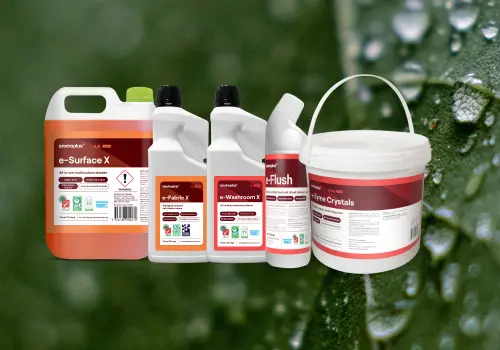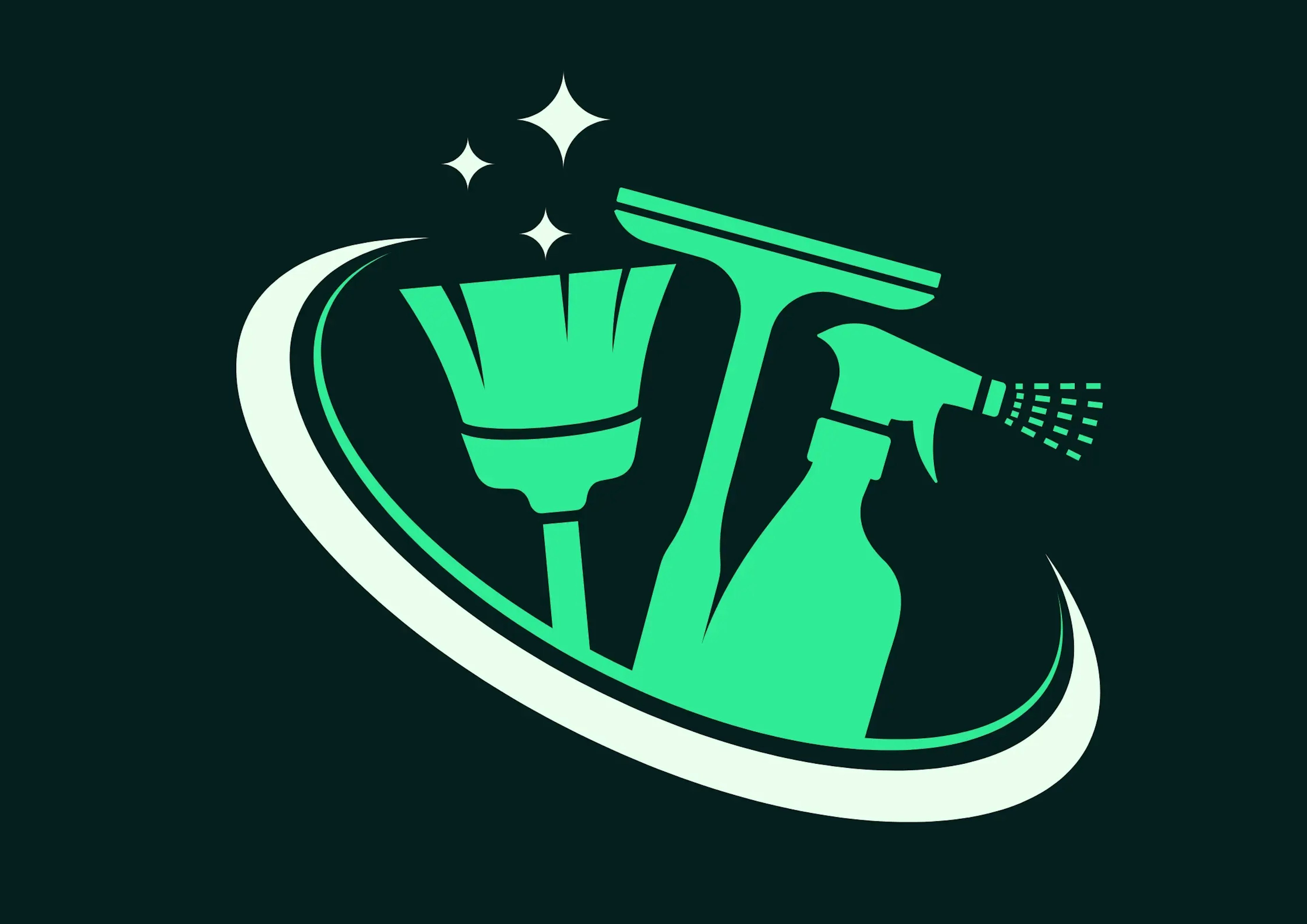How can I help?
Cleaning in Aged Care: Sustainable Best Practices
How to Protect Vulnerable Residents Whilst Meeting Strict Hygiene Standards with GECA-Certified Cleaning Solutions
Aged care facilities face unique challenges when it comes to maintaining the highest hygiene standards whilst protecting vulnerable residents from harmful chemical exposure. With increasing focus on environmental sustainability and ESG commitments, facility managers are seeking sustainable cleaning practices that don't compromise on safety or efficacy.
This comprehensive guide explores how eco-friendlier cleaning products and more sustainable cleaning solutions can transform aged care cleaning protocols, creating healthier environments for residents whilst meeting regulatory requirements.
Understanding the Unique Cleaning Challenges in Aged Care
Vulnerable Population Considerations
Elderly residents in aged care facilities often have compromised immune systems, respiratory conditions, and heightened sensitivity to chemical irritants. Traditional commercial cleaning products containing harsh chemicals can exacerbate these health issues, making the selection of appropriate cleaning solutions critical.
Low-toxicity cleaning products specifically formulated for sensitive environments offer a safer alternative without sacrificing cleaning performance. These solutions reduce the risk of chemical-related health complications whilst maintaining the stringent hygiene standards required in aged care settings.

Regulatory Compliance Requirements
Australian aged care facilities must comply with strict regulations set by the Aged Care Quality and Safety Commission (ACQSC) and adhere to guidelines from the Australian Government Department of Health. These standards mandate comprehensive infection control measures and environmental safety protocols.
Sustainable cleaning solutions that meet these regulatory requirements whilst supporting ESG goals represent the future of aged care facility management. GECA-certified and Global GreenTag certified products provide the assurance that cleaning protocols meet both environmental and health safety standards.
The Science Behind Sustainable Cleaning in Aged Care
Plant-Based and Microbial Technology
Modern eco-friendlier cleaning products utilise advanced formulations including plant-based surfactants and microbial technology. These innovations deliver superior cleaning results whilst being biodegradable and less harmful to both residents and the environment.
Plant-based surfactants derived from renewable resources offer excellent cleaning power without the volatile organic compounds (VOCs) found in traditional cleaning chemicals. This technology is particularly beneficial in aged care environments where air quality directly impacts resident wellbeing.
Reducing Chemical Exposure
Research consistently shows that reducing chemical exposure in indoor environments improves air quality and reduces respiratory irritation. For aged care residents who spend most of their time indoors, this consideration becomes paramount.
Microbial technology represents a breakthrough in sustainable cleaning, utilises bacteria spores that germinate and multiply to colonise cleaning surfaces. This approach significantly reduces the need for harsh chemicals whilst providing long-lasting cleaning effects.

Best Practice Sustainable Cleaning Protocols for Aged Care
Room-by-Room Guidelines
Resident Bedrooms and Bathrooms
- Use GECA-certified, low-toxicity products for daily cleaning
- Implement proper ventilation during and after cleaning
- Focus on high-touch surfaces with appropriate disinfectants
- Ensure products are fragrance-free to accommodate sensitivities
Common Areas and Dining Spaces
- Deploy multi-surface cleaners that are safe for food contact areas
- Utilise products with antimicrobial properties for high-traffic zones
- Maintain cleaning schedules that minimise disruption to residents
- Use colour-coded cleaning systems to prevent cross-contamination
Kitchen and Food Preparation Areas
- Apply food-safe, biodegradable cleaning solutions
- Implement HACCP-compliant cleaning protocols
- Use products that effectively remove grease and organic matter
- Ensure all cleaning residues are completely removed
Staff Training and Safety Protocols
Proper staff training ensures that sustainable cleaning practices are implemented effectively whilst maintaining safety standards. Training should cover:
- Correct dilution ratios for concentrated products
- Personal protective equipment requirements
- Storage and handling procedures for eco-friendly products
- Recognition of product certifications and their significance
Recommended Sustainable Products for Aged Care
GECA-Certified Solutions
GECA-certified products meet stringent environmental and health criteria, making them ideal for aged care applications. These products undergo rigorous testing to ensure they deliver effective cleaning whilst minimising environmental impact and health risks.
Specific Product Applications
Washroom CleaningGECA-certified washroom cleaners provide effective sanitation without harsh fumes or chemical residues that could affect residents with respiratory sensitivities.
Surface DisinfectionMulti-surface cleaners formulated with plant-based ingredients offer broad-spectrum antimicrobial activity whilst being gentle on surfaces and safe around vulnerable populations.
Odour ManagementFree enzyme-based products effectively eliminate odours at the source without masking agents or artificial fragrances that may trigger sensitivities.
Implementation Strategy for Aged Care Facilities
Transition Planning
Successfully transitioning to sustainable cleaning practices requires careful planning and stakeholder buy-in. Consider these steps:
- Assessment Phase: Evaluate current cleaning protocols and identify areas for improvement
- Product Selection: Choose certified sustainable products that meet specific aged care requirements
- Staff Training: Implement comprehensive training programmes for cleaning staff
- Monitoring: Establish metrics to measure cleaning effectiveness and resident satisfaction
- Continuous Improvement: Regular review and optimisation of cleaning protocols
Measuring Success
Key performance indicators for sustainable cleaning in aged care include:
- Reduction in chemical-related incidents or complaints
- Improved air quality measurements
- Resident and staff satisfaction scores
- Compliance with environmental certifications
- Cost-effectiveness compared to traditional products
Environmental and Health Benefits
Protecting Vulnerable Residents
The primary benefit of sustainable cleaning practices in aged care is the protection of vulnerable residents from harmful chemical exposure. Minimising the environmental impact of cleaning operations also contributes to better indoor air quality and overall resident wellbeing.
Biodegradable cleaning products break down naturally without leaving harmful residues, reducing the risk of skin irritation and respiratory issues common among elderly residents.
Supporting ESG Commitments
Aged care providers increasingly recognise the importance of environmental responsibility as part of their duty of care. Sustainable cleaning practices demonstrate commitment to environmental stewardship whilst delivering tangible health benefits for residents.
These practices align with broader ESG goals, helping facilities attract environmentally conscious families and staff whilst potentially reducing operational costs through improved efficiency and reduced health-related incidents.
Compliance and Certification Considerations
Australian Standards and Regulations
Sustainable cleaning products used in aged care must meet Australian standards for efficacy and safety. Products certified by recognised bodies such as GECA and Global GreenTag provide assurance of compliance with both environmental and health criteria.
The Therapeutic Goods Administration (TGA) regulates disinfectants and sanitisers used in healthcare settings, ensuring that sustainable alternatives meet the same efficacy standards as traditional products.
Documentation and Auditing
Maintaining proper documentation of cleaning protocols, product specifications, and staff training records is essential for regulatory compliance. This documentation also supports continuous improvement efforts and demonstrates commitment to best practices during audits.
Future Trends in Aged Care Cleaning
Technological Advancement
The cleaning industry continues to evolve with new technologies that enhance sustainability whilst improving effectiveness. Developments in microbial technology, enzyme formulations, and plant-based chemistry promise even better solutions for aged care applications.
Regulatory Evolution
As environmental awareness grows, regulatory frameworks are likely to evolve to favour sustainable practices. Aged care facilities that adopt sustainable cleaning practices now will be better positioned to meet future requirements.
Conclusion
Sustainable cleaning practices in aged care represent a crucial evolution in facility management, balancing the need for stringent hygiene standards with the protection of vulnerable residents and environmental responsibility. By implementing eco-friendlier cleaning products and protocols, aged care facilities can create healthier environments for residents whilst meeting regulatory requirements and supporting ESG commitments.
The transition to sustainable cleaning requires careful planning, appropriate product selection, and comprehensive staff training. However, the benefits—including improved resident health, reduced environmental impact, and enhanced reputation, make this investment worthwhile for forward-thinking aged care providers.
Ready to transform your aged care cleaning protocols with sustainable solutions? Explore our range of GECA-certified products designed specifically for safer environments, or contact our aged care cleaning specialists for a comprehensive facility assessment.


